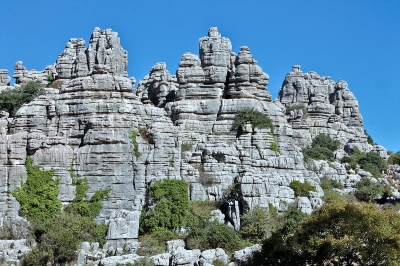
Limestone is a sedimentary rock composed mainly of the mineral calcite, which is a crystalline form of Calcium Carbonate (CaCO3). Limestone often contains variable amounts of silica in the form of Jasper or Flint, as well as amounts of clay, silt, and sand as disseminations, nodules, or layers within the rock unit. The main source of this calcite in limestone is speleothems such as stalagmites and stalactites. The secondary source of calcite is the shells of sea animals and corals.
Limestone makes up about 10 percent of the total volume of all sedimentary rocks. Most Limestone starts as the floor of shallow tropical seas and can be seen in parts of the tropics that are only 30 to 40 years old. The stone has the unique property of retrograde solubility, meaning that the stone is less soluble in water as the temperature increases.
Limestone is also classified as a young marble formed from the consolidation of seashells and sediment. Shells of sea animals form grains in limestone that promotes the growth of cement crystals around themselves.
Limestone is a popular building material because of its availability and the relative ease with which it can be worked with and cut. The stone can have a very diverse chemical composition, which can result in a variety of different colours of limestone or even within a single cut of the stone.
Credit: Banas stones
Picture credit: Wikipedia




